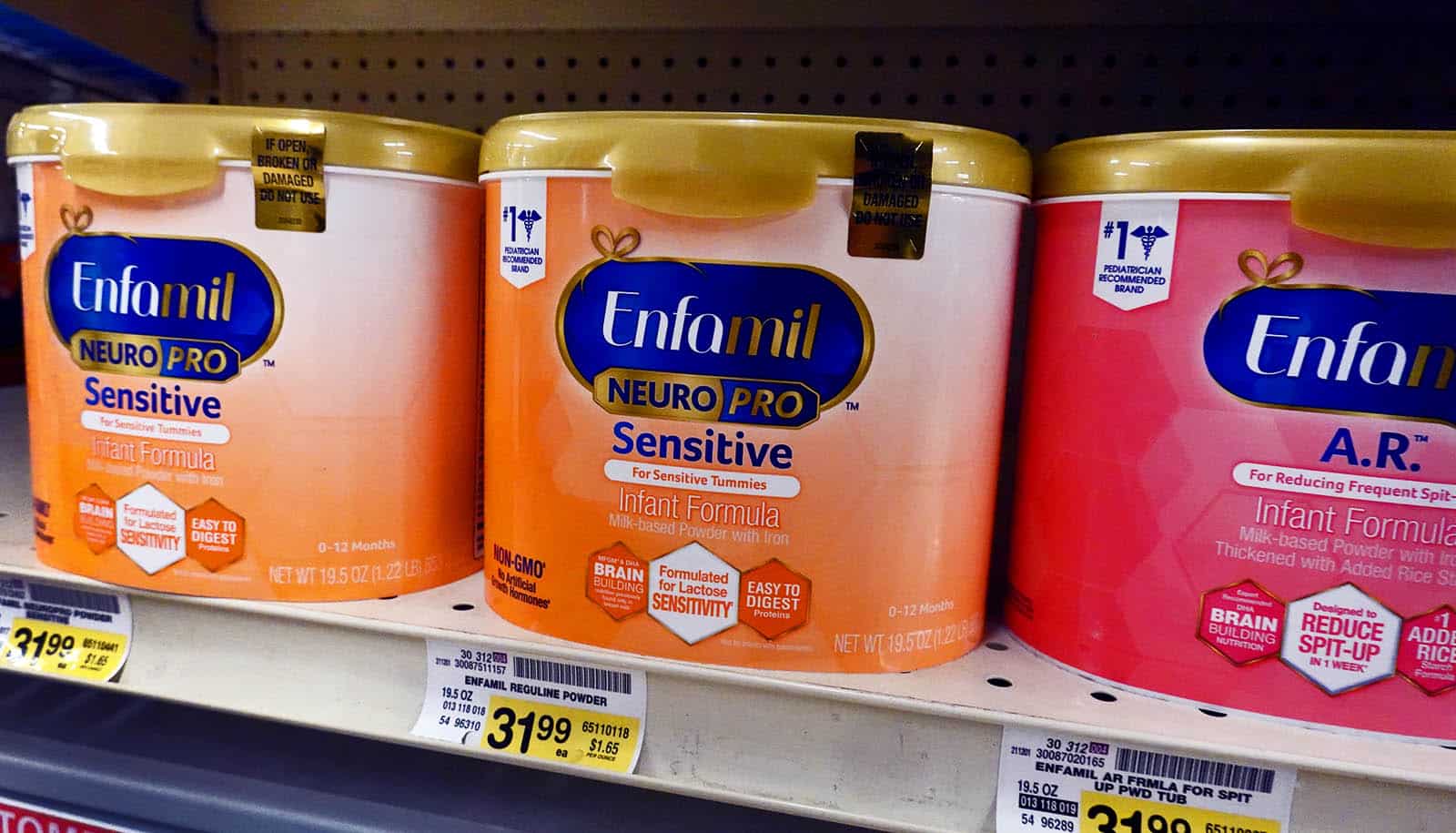A new study finds that a majority of baby formula sold in the United States is lactose-reduced despite that not being medically necessary for most families.
The sugars found in lactose-reduced infant formula are associated with higher risks of obesity, changes in the microbiome, and formation of biofilms on teeth.
“Lactose-reduced formula will have some alternative form of carbohydrates in it, often times, this is corn-syrup or corn syrup solids,” says Bridget Young, assistant professor in the Division of Breastfeeding and Lactation at the University of Rochester Medical Center and lead author of the study.
The researchers based the study on purchase data from software company Information Resources, Inc. The data encompassed all major big-box stores in the United States (with the exception of Costco) that sold infant formula in the United States between 2017 and 2019.
The research analysis considered more than 1.65 billion liters of formula. Researchers obtained protein and carbohydrate composition and scoop sizes for each formula from manufacturers. The findings appear in the journal Clinical and Experimental Allergy.
The analysis of formula purchased from these stores found the following:
- 5.5% of infant formula sold was hypoallergenic (designed specifically for children with a cow’s milk protein allergy), which is greater than estimates of cow’s milk protein allergy in infants of 1.3%.
- 59% of all formula sold was lactose-reduced—meaning the formulas included substitution carbohydrates such as corn syrup or table sugar.
- 32% of all “standard formula” sold—formula designed for healthy infants that is non-thickened and contains intact dairy proteins—was found to be lactose-reduced, despite no medical indication for this category.
(Ready-to-feed and liquid products, products for premature infants, and products for children over one year old were not included in the study.)
The purchasing data suggest that far more children are consuming these formulas than are medically necessary. Young maintains that these formulas are safe and that infants can thrive on any type of formula, but there is evidence of nutritional risk as non-lactose carbohydrates are significantly sweeter than lactose and are metabolized differently in the body.
“This research has significant implications on a population-health level, and it highlights ways we can improve how infant formula is regulated and marketed,” says Young, “Parents should not have to flip the can and wade through the ingredients label to find critical information; it should be front-forward.”
According to Young, standard formula brands should be manufactured to emulate breast milk as closely as possible, and hypo-allergenic formula—which is typically more expensive than standard formula—should be clearly labelled so parents understand that its use is for children with a cow’s milk allergy (all hypoallergenic formula is lactose-reduced).
“Breast milk is the gold standard, so lactose-reduced brands are a big deviation if the baby doesn’t need it medically,” she says.
In light of these findings, Young encourages parents and caregivers to have discussions with their pediatrician about the best formula for their children. Young also calls for the FDA to regulate how non-lactose-based carbohydrates can be used in infant formula and to ensure such information is clearly marked on the product.
“Parents have been through so much these last few years,” says Young, “They shouldn’t need a PhD in nutrition to decode what is in their baby’s formula. This type of information should be transparent and easily accessible.”
Source: University of Rochester



